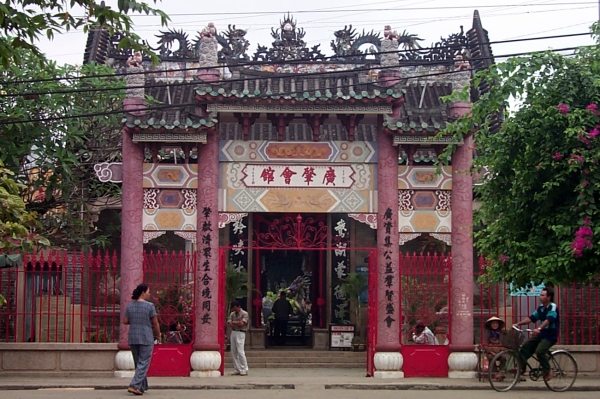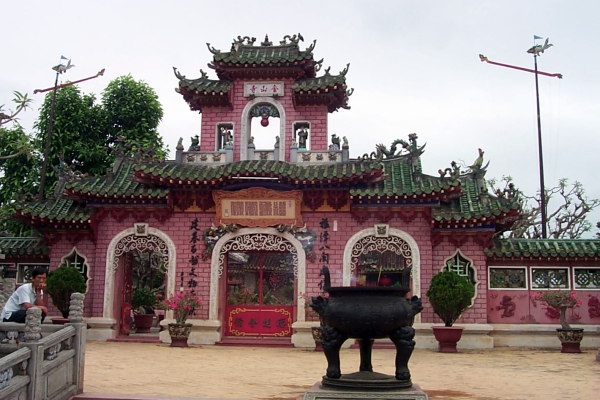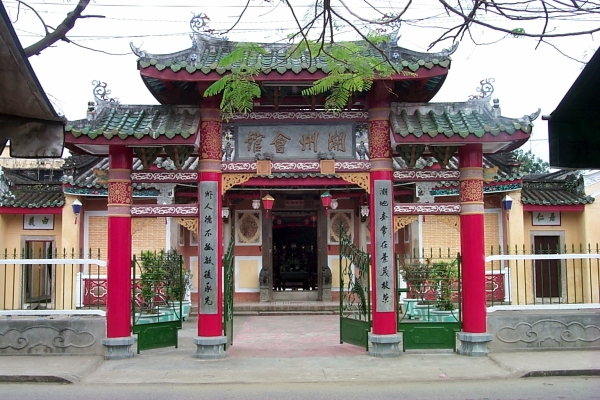The Chinese have long been present in Hoi An, and probably contributed much to its importance as a trading center. The traders came from various parts of China, and over time each community built its own clan houses as places where they could make contact with their own distant kinsmen.
 The Cantonese Congregation Hall
The Cantonese Congregation Hall
The Cantonese congregation hall was founded in 1786. Like most of the halls, there is a central courtyard with a meeting area near the front entrance and a alter at the back.
The beauty of many of these halls is the details you can find here and there. Dragons abound, such as the one at right decorated with ceramic tiles and set in an ocean of its own. The Chinese who built these halls were seafaring traders, so they were very keen on appeasing the gods of the waters.
 The Fujian Clan hall
The Fujian Clan hall
One of the larger halls is the one originally built by the Fujian congregation. There is a very large forecourt, which is modern, backed by the temple. Inside are many murals and statues depicting deities and figures from Fujian history.
 Altar of memorials in the community buildings of the Fujian Clan hall
Altar of memorials in the community buildings of the Fujian Clan hall
In a quiet side room of all the community buildings, you'll find small chapels to deceased community leaders, such as the one at right. Red tablets with gold lettering placed on the alters are miniature versions of the big stone steles the Nguyen emperors erected in their tombs.

A bit apart from the central area is the Chaozhou hall, also called the Trieu Chau or Teochiu - the same ethnic group to which many of Thailand's Chinese belong. This hall is a bit less impressive than the others, but still has some nice details. Although the exterior is a bit plain, inside you will find some fine wood carving and rich textures.

In addition to the dragons shown above, another common site in the assembly halls are the "miniature mountains." Craggy stones are set in tubs or pools, with small plants and bonsai trees growing on them. There's usually a mythical figurine or two as well. On one, which had a model of the great wall, I even found a lizard had taken up residence, or maybe I just stumbled on the set of a low budget monster movie.
 A vicious temple guard dog
A vicious temple guard dog
In front of all temples, as well as many other buildings, you will find stone statues of the ferocious "lion dogs" guarding the gates. I was lucky to come across a real live example of these vicious beasts in one of the Chinese temples. Careful, he looks about to pounce!